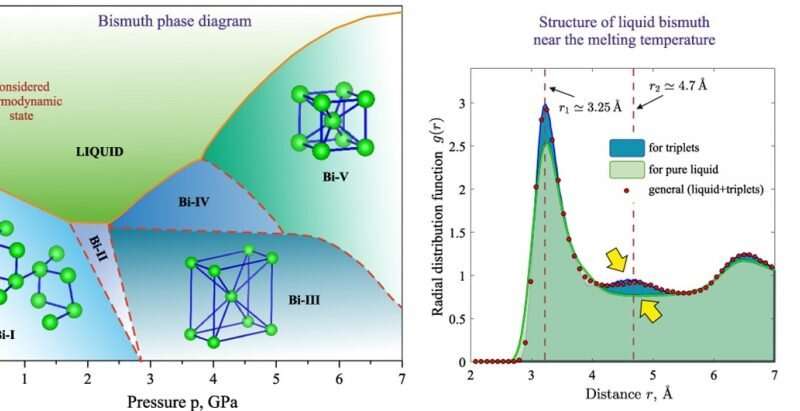KFU researchers explain an anomaly in the structure of liquid bismuth

A paper saw light in Scripta Materialia.
The work was carried out within the framework of the project "Theoretical, simulation, and experimental studies of physical and mechanical properties of amorphous systems with inhomogeneous local viscoelastic properties" supported by a grant from the Russian Science Foundation, headed by Professor Anatoly Mokshin.
"We have found for the first time that liquid bismuth contains quasistable structures in the form of extended chains formed from 'triplets of atoms'—triplets of regular geometry. Directly these structures are the cause of the so-called 'structural anomalies' registered by X-ray and neutron diffraction experiments in bismuth melt, but absent in most other single-component melts. This scientific result was obtained by combining the traditional experimental technique of X-ray diffraction and a numerical experiment on first-principles modeling of molecular dynamics," says the Professor.
Bismuth is used in the pharmaceutical industry for the manufacture of medicines, in electronics for the manufacture of magnetic memory devices, in metallurgy for the manufacture of fusible alloys, in the nuclear power industry as a liquid metal coolant in combination with lead.
The discovery made by KFU scientists makes a significant contribution to the understanding of physical processes occurring at the level of atoms in melts of polyvalent metals such as bismuth, and opens the way to the development of new methods for obtaining (forming) nanostructures based on metal melts.
More information:
Quasi-stable structures in equilibrium dense bismuth melt: Experimental and first principles theoretical studies
www.sciencedirect.com/science/ … 135964622300341X?via%3Dihub
Provided by Kazan Federal University